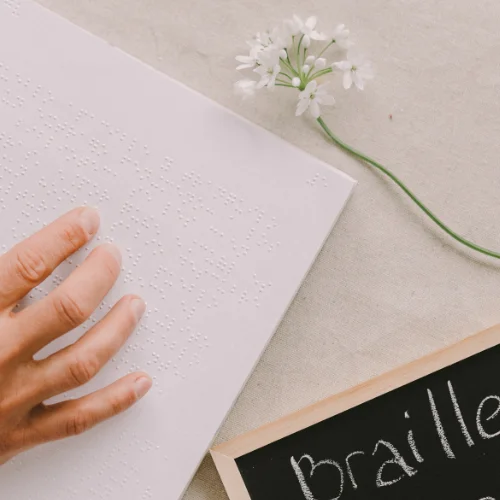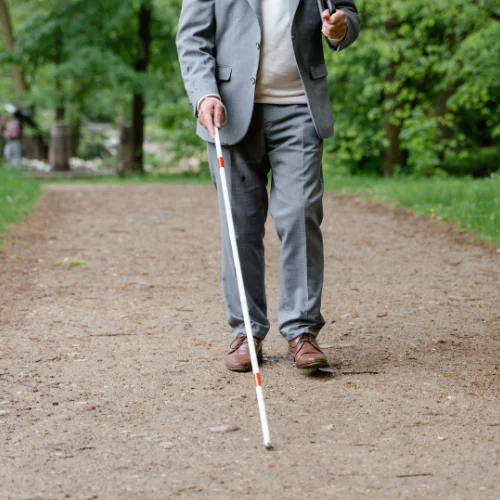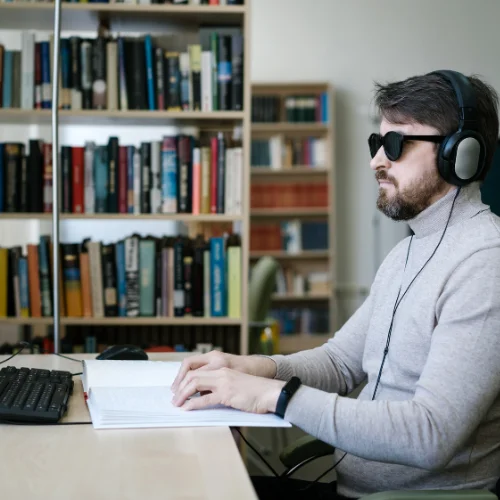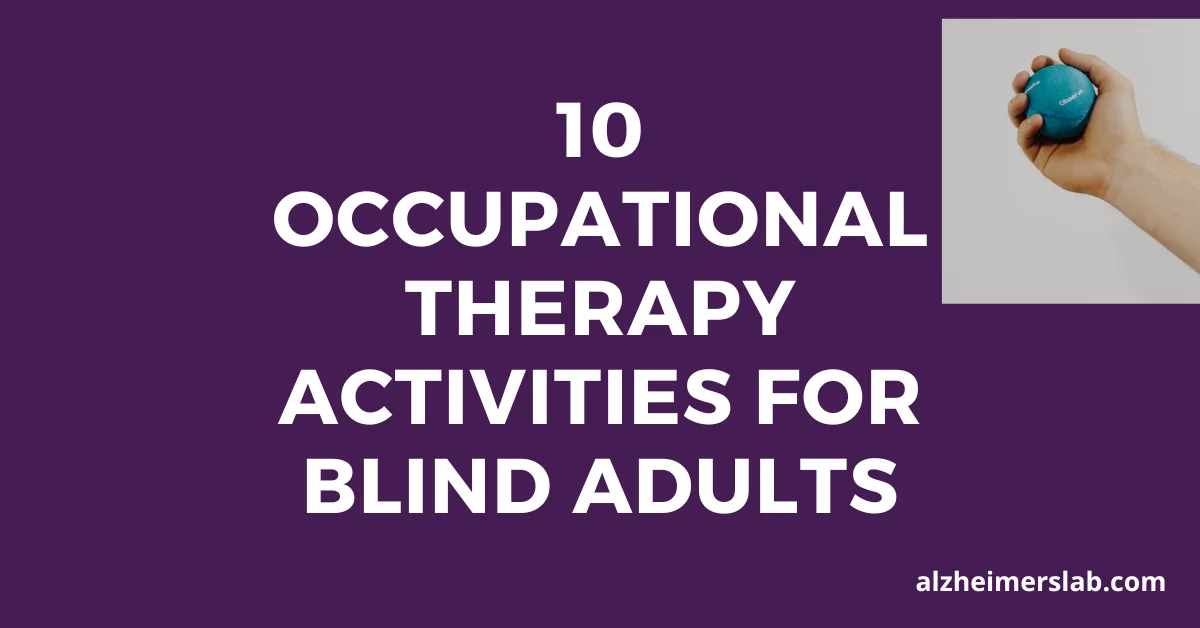10 Occupational Therapy Activities for Blind Adults
Living with visual impairment poses unique challenges, and blind adults often navigate a world primarily designed for those with sight. Occupational therapy can play a pivotal role in fostering independence and improving the overall well-being of individuals facing visual challenges. In this blog post, I will share 10 effective occupational therapy activities specifically tailored for blind adults. From daily living skills to recreational pursuits, these activities aim to enhance sensory awareness, boost confidence, and promote a more fulfilling lifestyle.
Here Are the 10 Occupational Therapy Activities for Blind Adults
1. Orientation and Mobility Training
First and foremost, a crucial aspect of occupational therapy for blind adults involves honing orientation and mobility skills. This training helps individuals navigate their surroundings confidently. Techniques may include learning to use a white cane, understanding auditory cues, and mastering guide dog assistance.
Example: Imagine learning to interpret the sounds of traffic to cross a street safely or confidently maneuvering through unfamiliar environments with a white cane.
2. Adaptive Cooking Classes
Cooking is not only a necessary life skill but also a therapeutic and enjoyable activity. Adaptive cooking classes provide blind adults with the tools and techniques to prepare meals independently. Tactile markers, talking kitchen gadgets, and hands-on instruction contribute to a positive and empowering culinary experience.
Example: Using textured markers on stove dials or tactile measurements on cups allows individuals to gauge and manage cooking temperatures and quantities effectively.
3. Braille Literacy Programs

A cornerstone of independence for blind adults is proficiency in Braille. Occupational therapists can guide individuals through Braille literacy programs, fostering reading and writing skills. This opens doors to employment opportunities, leisure reading, and effective communication.
Example: Learning to read Braille may start with labeling common household items, progressing to reading books, and eventually mastering more complex documents, like recipes or manuals.
4. Sensory Awareness Activities

Enhancing sensory awareness is pivotal for those with visual impairments. Occupational therapy may involve engaging in activities that heighten the remaining senses, such as touch, smell, and hearing. This not only compensates for the loss of vision but also strengthens overall sensory perception.
Example: Exploring different textures through touch, identifying scents in various environments, and practicing sound localization exercises contribute to a more nuanced sensory experience.
5. Adaptive Technology Training
In our technologically advanced world, adaptive technology plays a significant role in the lives of blind adults. Occupational therapists can guide individuals through the use of screen readers, voice-activated devices, and specialized apps designed to enhance accessibility.
Example: Mastering screen reader software allows blind individuals to navigate websites, read emails, and use various applications independently, fostering both professional and personal autonomy.
6. Independent Travel Planning

Independence often hinges on the ability to travel freely. Occupational therapists can assist blind adults in developing travel plans, whether for daily commuting, leisure activities, or travel adventures. This may involve understanding public transportation routes, planning accessible pathways, and utilizing technology for seamless navigation.
Example: Planning a trip may include exploring tactile maps of a city’s public transportation system, understanding bus or train schedules, and utilizing GPS apps for real-time navigation.
7. Music and Audio Appreciation
Engaging in musical and audio activities can be a source of great joy and fulfillment for blind adults. Occupational therapists may introduce individuals to playing musical instruments, exploring diverse genres, or even attending live performances, enhancing their auditory experiences.
Example: Learning to play a musical instrument by recognizing the different sounds and pitches or attending a live concert and feeling the vibrations of the music can be incredibly rewarding.
8. Adaptive Fitness Programs
Physical well-being is equally important for individuals with visual impairments. Adaptive fitness programs, tailored to the specific needs and abilities of blind adults, can improve strength, flexibility, and overall health. These programs may involve modified exercises, guided routines, and accessible fitness equipment.
Example: Utilizing resistance bands with varying textures, practicing yoga poses with verbal cues, or participating in guided group fitness classes catered to blind individuals can make exercise enjoyable and effective.
9. Employment Skills Development

Occupational therapy extends beyond personal development to professional growth. Blind adults often face unique challenges in the workplace, and occupational therapists can assist in developing skills such as effective communication, time management, and task organization.
Example: Simulated work scenarios may involve practicing job interviews, refining communication skills, and mastering adaptive technologies used in professional settings.
10. Socialization and Support Groups
Fostering a sense of community is vital for the well-being of blind adults. Occupational therapists can facilitate socialization and support groups where individuals share experiences, challenges, and successes. This creates a supportive network and encourages a sense of belonging.
Example: Weekly gatherings may include group activities like book clubs, game nights, or simply open discussions, providing a platform for individuals to connect, share, and support each other.
Conclusion
Occupational therapy for blind adults goes beyond mere skill-building; it’s about fostering a holistic approach to living a fulfilling life. From essential skills like orientation and mobility to recreational pursuits such as music appreciation, each activity contributes to a sense of independence and well-being. The journey towards self-sufficiency is a dynamic process, and occupational therapy serves as a guiding light, empowering blind adults to navigate the world on their own terms.
What other activities do you think could enhance the lives of blind adults? Share your thoughts and experiences in the comments below!

